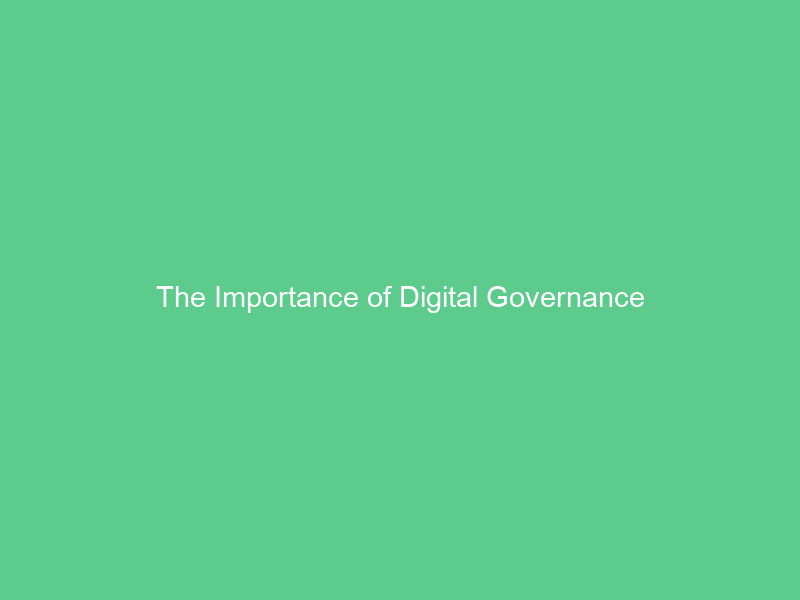Digital governance is a method for businesses to address market challenges. It involves incorporating digital tools with existing board policies and procedures, helping to ensure digital projects align with company goals and objectives.
Setting clear responsibilities and liabilities for board members is also critical before adopting digital technologies.
Accessibility
As more government services move online, digital governance must ensure they can be utilized by all citizens – this means ensuring accessibility for people with disabilities.
Government agencies often fall behind in their attempts to make their websites and apps accessible, either due to the complexity of implementing accessibility standards or failing to prioritize these efforts and allocate sufficient resources for accessibility efforts.
Digital accessibility is increasingly being prioritized by states and cities across the U.S.; indeed, many now have specific positions dedicated to this work with individuals who can lead efforts, oversee progress and offer advice.
Accessibility is an integral component of digital governance because it enables organizations to better serve their customers and constituents while avoiding expensive rework and speeding delivery timelines. But noncompliance may result in legal ramifications as well as decreased usership.
Security
Security is an integral component of digital governance. It ensures that companies conduct their digital activities ethically and are protected from cybercrimes, while mitigating risks and protecting customers’ data.
Utilizing cybersecurity best practices is an excellent way to strengthen digital governance, including implementing strong protocols and training staff and volunteers on how to utilize them. Furthermore, keeping software and anti-virus programs up-to-date and using only trusted apps should also be prioritized by boards. Furthermore, board members should encourage one another to collaborate through their board management system instead of email or other less secure means.
Planned responses to cyber incidents are also crucial, to help ensure that boards can quickly react and limit any damage. A good plan should include an action list in case of breach or incident and be reviewed regularly to make sure that best practices are being observed by all company entities.
Privacy
Digital governance can assist organizations with becoming more efficient and responsive to the needs of their constituents, while simultaneously cutting board meetings times considerably; this is particularly important for mission-driven nonprofits with limited budgets.
Digital governance research has seen immense global expansion. Key aspects of its focus include usability and reliability of digital governance systems, quality assurance within its framework, as well as impacts of digital transformation on public value perceptions. Based on bibliometric analysis, the United States leads in digital governance studies. China, England and India follow close behind. Scholars involved in digital governance research worldwide appear highly connected – an indication of strong collaboration and widespread academic interest – which should continue for some time; research topics for digital governance will only become more diverse due to technological development and social shifts.
Compliance
As with magazines, online presences should have an editor-in-chief. Someone must “own” every aspect of your online presence and be held responsible for upholding policies, standards, and procedures that must be upheld in accordance with policies, standards, and procedures. A strong governance structure clarifies ownership and accountability while simultaneously empowering teams to get work done efficiently.
As cyber security threats continue to evolve, it’s vital that board members understand their specific digital governance responsibilities if they wish to ensure an integrated digital presence while safeguarding against legal issues or cybersecurity threats. Companies that rely heavily on multiple online platforms need clear roles and accountabilities for managing these tools in order to develop comprehensive cybersecurity protocols, avoid costly data breaches and remain agile enough in the face of disruptions. Investing in ongoing education and training programs will ensure that board members remain current on best digital governance practices, helping prevent costly digital missteps that may damage reputations or take time to recover from.

